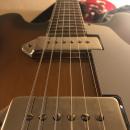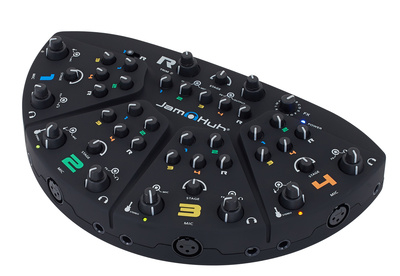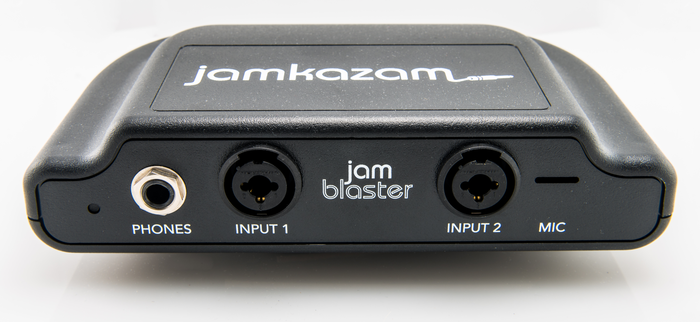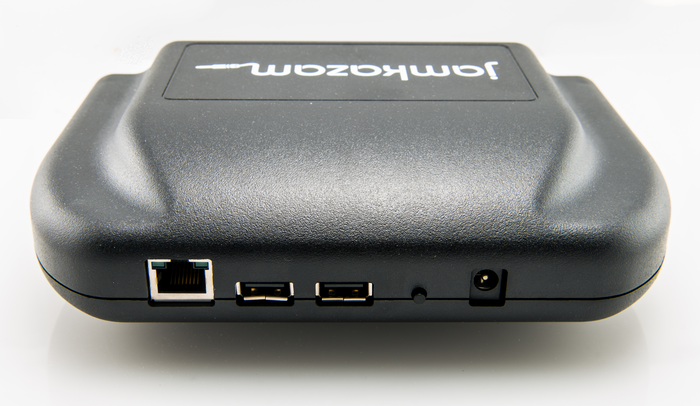¿Hola me gustaría saber si conocéis algún método para tocar online con un amigo?
Utilizo Mac y Logic Pro.El utiliza Windows.
Utilizo Mac y Logic Pro.El utiliza Windows.





Panxa escribió:Estoy investigando un poco sobre este tema para un proyecto, y me preguntaba si me podrías ayudar con algunas dudas que me surgen
Panxa escribió:Por ejemplo, ¿realmente practicarías más música, o ensayaríais con vuestro grupo de manera online?
Panxa escribió:¿Cuál sería vuestros 3 requisitos básicos para utilizar una herramienta similar a esta?




ejamming escribió:
Your Responsibilities Regarding Cover Material
You must agree and adhere to eJamming Inc.’s Cover License and Mechanical License Policy in order to use the eJAMMING® AUDiiO software.
When a Account Holder to the eJamming Service uses the eJamming AUDiiO software to enter into an eJamming session with other Account Holders (which is not recorded) and the Account Holders cover and/or perform existing musical material by virtue of their interaction, then none of the participants in that eJamming session will have to pay a license fee or a mechanical license fee by virtue of participating in an eJamming online jamming session. With regard to cover (non-original) material, eJamming, Inc. is negotiating blanket licenses from the music performing rights organizations (ASCAP, BMI and SESAC) which will cover your performance online of such cover material.
However, if any one of the Account Holders participating in the eJamming session records the non-original composition, a license may be required from the publisher and/or copyright owner of the underlying non-original composition.
If any one of the Account Holders participating in the eJamming session distributes the recording over the Internet or via any other mechanical method now known or hereafter devised, then the Account Holder distributing the recording must promptly pay the applicable mechanical license fees to the appropriate organization(s). By using the eJamming service, you agree and acknowledge that eJamming is not responsible for, nor shall it make, mechanical license fee payments on behalf of any Account Holder. Information on mechanical license rates and forms for licensing mechanical reproductions of cover material from the Harry Fox Agency, Inc. can be found at http://www.harryfox.com.
Any failure to make such payments will result in the termination of your subscription to the eJamming Service and may subject you to Copyright violations. You agree (to the extent permitted by applicable law) to hold harmless and indemnify eJamming, Inc, its subsidiaries, affiliates, related companies, employees, officers, directors, agents and suppliers against any liability, claims, or demands regarding license and mechanical fees, including reimbursing eJamming, Inc. for the company’s costs in providing information or testimony in court and/or hiring attorneys to defend against the action.




Alguien escribió:I’m skeptical. Is this really possible?
Yes, it definitely is. Major research universities have conducted various studies that indicate that as long as you can keep latency down to 25 milliseconds or less, musicians can play pretty much any music together, stay in sync, and have a great experience. Even above 25 milliseconds, many musicians can play a variety of music enjoyably – especially pieces with a slower tempo or pieces that require less precision. Many audio interfaces when combined with JamKazam will deliver 10 to 15ms of round trip audio processing latency to capture, encode, decode, and play music – basically everything but Internet latency. So with one-way Internet latency of 15ms or less, you can play pretty much anything. This equates to a ping time of 30ms between computers. A cross-country ping can be as low as about 75ms, so you can play with musicians pretty far away, as long as you don’t suffer from an irrational route path by your ISP that, for example, sends your packets from Austin to Atlanta to Dallas – like a really bad connecting flight plan. For more information, check out one of our favorite university research papers on this subject at http://bit.ly/1bry9QP.
Alguien escribió:JamBlaster Specifications
Following are tech specs on the JamBlaster:
JamBlaster Computing Resources
The JamBlaster includes a quad-core 1.2GHz ARM processor, 1GB memory, 8GB storage, and GigE Ethernet network connectivity. It runs a Linux operating system with an optimized real-time kernel, and the entire system has been designed, architected, and optimized end-to-end to deliver blazing audio processing speed.
JamBlaster Audio Quality
The JamBlaster uses premium audio components throughout to deliver superb audio quality on par with audio interfaces that were designed only for recording. The JamBlaster delivers up to 24-bit, 96kHz premium audio. Frequency response for mic/line/instrument inputs is 20Hz – 20kHz +/-0.2dB. THD+N is -107dB for mic inputs and <-100 dB for line and instrument inputs.
Input Ports
The JamBlaster features two Neutrik combo ports on the front, so you can plug in either 1/4" (TS) or XLR style connectors. Each input port can be individually set to accept line level (lo Z) or instrument level (hi Z) inputs, and each input port can be individually set to supply 48V phantom power if needed.
Headphone Port
The headphone port accepts a standard 1/4" TRS connector from your headphones.
Chat Mic
The horizontal cutout labeled "MIC" on the front of the JamBlaster is a built-in chat mic you can use to talk with other musicians while in sessions.
Ethernet Port
The Ethernet port on the rear of the JamBlaster is a GigE Ethernet port, and the JamBlaster must be connected to your home router using an Ethernet cable (not included) for Internet connectivity. We are considering supporting WiFi USB sticks via the USB ports on the rear of the JamBlaster, but WiFi usually causes substantial latency and audio degradation, so we are not committing to enabling this capability. We will continue to consider it as a possibility as routers improve over time.
USB Ports
The JamBlaster includes 8GB of onboard storage, and the Linux operating system and JamKazam application that run on the JamBlaster use less than 1GB of this storage. For musicians who want more storage capacity for recordings, we plan to support a short list of "certified" USB memory sticks that you can buy and plug into a USB port to expand the JamBlaster's storage capacity.
Reset Button
This button is available in case troubleshooting is needed on the JamBlaster. For example, it can be used to hard reset the box to factory defaults.
Power Supply
The JamBlaster's power supply (included with the JamBlaster) is rated for 100-240VAC 50/60Hz, so it works with both North America's standard 120V/60Hz and Europe's standard 220V/50Hz power infrastructure. Please note that the physical power supply plug is a standard US plug type, so if you live outside the US, you will need to use a plug adapter (not included), but not a power converter.
Compatibility with Recording SoftwareThe JamBlaster may be connected to Windows and Mac computers using a USB cable (not included), and will act as a "normal" audio interface when used in this configuration, so you can use it with your favorite recording software (e.g. Avid ProTools, Ableton Live, Steinberg Cubase, Reaper, GarageBand, etc.).
Controls
The JamBlaster is controlled using a companion app that can run in a standard browser on Windows, Mac, and Linux computers. Or you may control the JamBlaster using a companion app that can run on iOS or Android tablets and smartphones.



Regístrate o identifícate para poder postear en este hilo